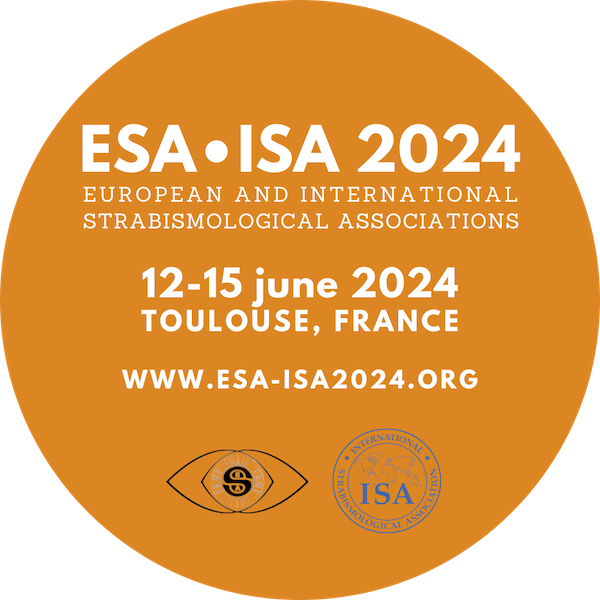
Session: Poster session C
Choroidal effusion induced by Lateral Rectus Split Nasal Transposition (LRSNT) for 3rd nerve palsy due to vortex vein compression solved by relaxing adjustable sutures.
Introduction
Lateral Rectus Split with Nasal Transposition (LRSNT) for a complete 3rd nerve palsy may offer a permanent correction of the ocular misalignment, but studies have shown up to 10% risk of choroidal effusion and serous retinal detachment in the immediate postoperative phase. We present a case with Indocyanine Green (ICG) verified vortex vein pulsation after LRSNT and how this can be managed.
Methods
Evaluation of patients treated with LRSNT for a complete 3rd the last five years to report any cases of choroidal effusion.
Results
Among 35 patients with 3rd nerve palsy, four patients had LRSNT performed in one eye. Of these, one had choroidal effusion:
A 61y-old-woman operated for a large pituitary adenoma suffered from a complete left 3rd nerve palsy with ptosis, exotropia and hypotropia. The ptosis resolved, but the ocular deviation in the left eye (LE) remained, thus a left LRSNT was performed. On the day after the surgery, the patient complained of pain in LE, and of visual loss in LE from BCVA 0,7 to 0,1. Optical coherence tomography showed choroidal effusion with severe choroidal folds, and ICG showed venous pulsation of the lower nasal vortex vein, and the intraocular pressure (IOP) was 35 mmHg. At day 8, still without resolution, a 5 mm relaxation of the adjustable sutures on both the superior and inferior part of the LRSNT in LE were performed, and during the following week, IOP normalized, choroidal folding and effusion reduced, and BCVA improved from 0.1 to 0.8 Snellen. ICG angiogram film shows venous pulse in vortex veins at first day after left LRSNT for a complete 3rd palsy.
Discussion
LRSNT for complete 3rd nerve palsy may produce choroidal effusion and serous retinal detachment in the immediate postoperative phase due to compression of the vortex veins. In this case, ICG showed vortex vein pulsation, and relaxation of the adjustable sutures eight days after surgery resolved the problem.
Word-count: 316
Characters: 1939